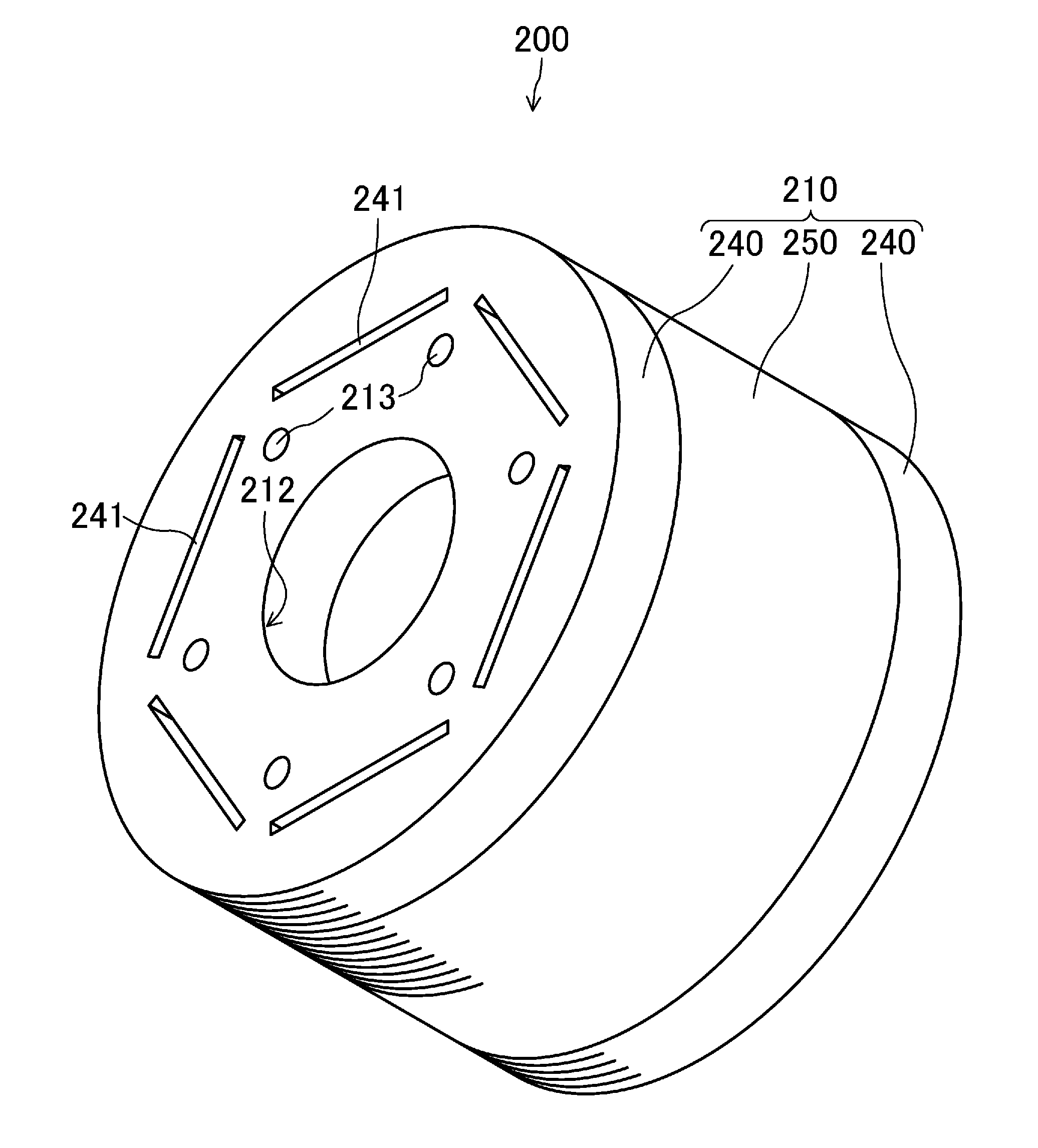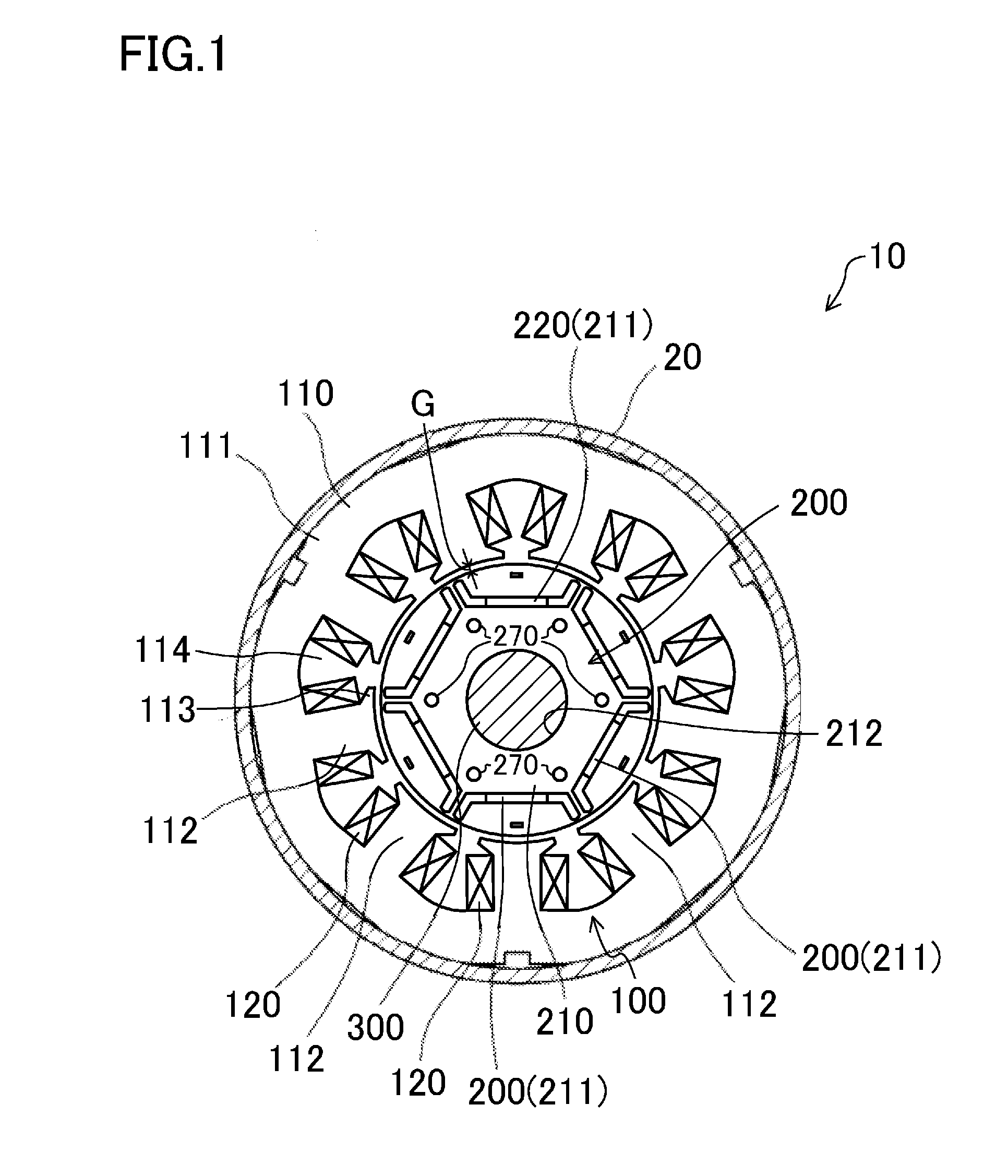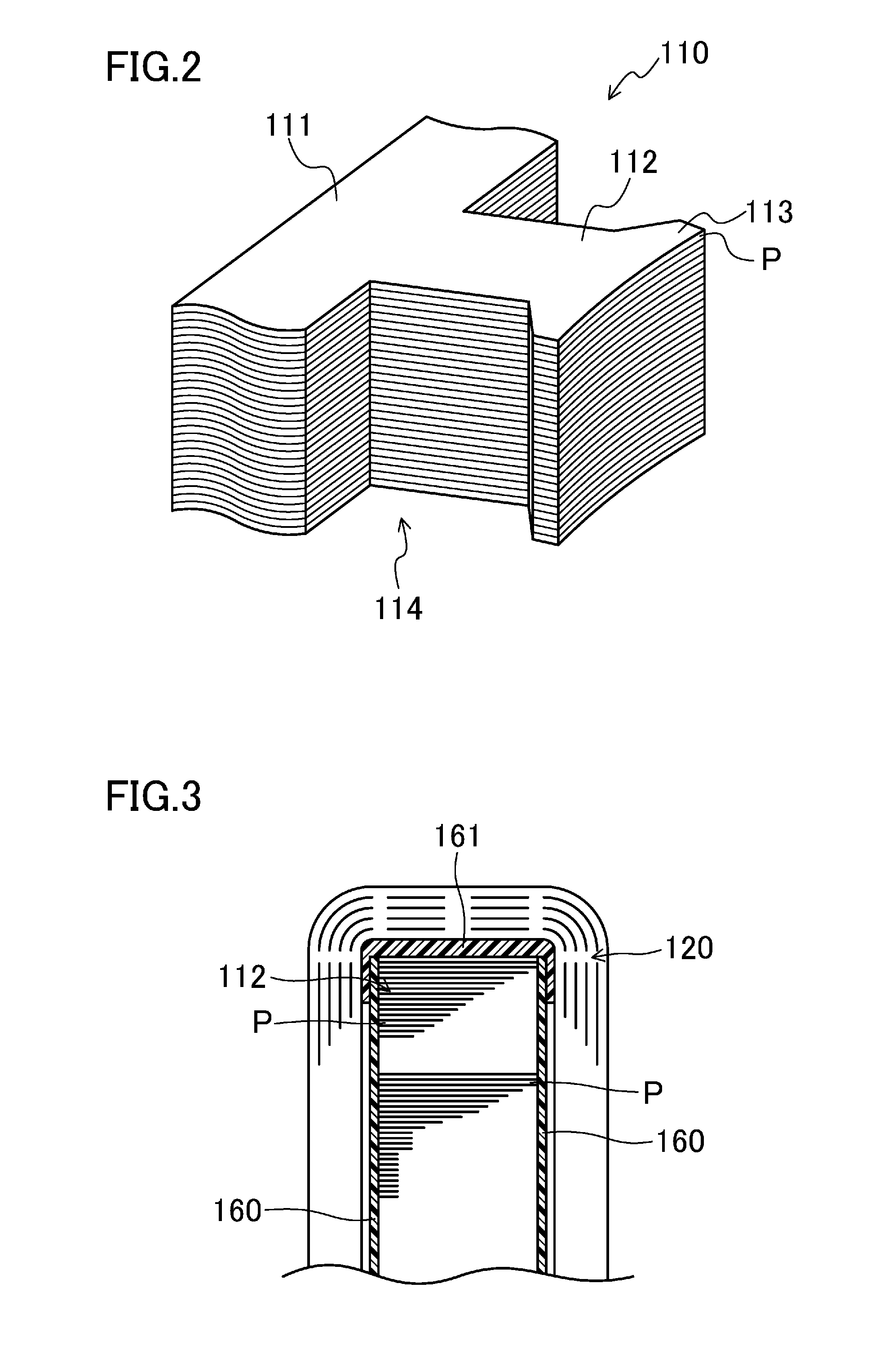Rotor and rotary electric machine using the same
a technology of rotary electric machines and rotors, applied in the field of rotors, can solve the problems of increasing costs, and achieve the effects of reducing machine performance degradation, easy setting of magnetic resistance, and convenient fabrication
- Summary
- Abstract
- Description
- Claims
- Application Information
AI Technical Summary
Benefits of technology
Problems solved by technology
Method used
Image
Examples
first embodiment
[0062]FIG. 1 is a transverse sectional view illustrating a motor (10) according to a first embodiment of the present invention. The motor (10) is used for, for example, an electric compressor (not shown) of an air conditioner.
[0063]10)>
[0064]As illustrated in FIG. 1, the motor (10) includes a stator (100), a rotor (200), and a driving shaft (300), and is housed in a casing (20) of the electric compressor. In the following description, the “axial direction” or “axial” refers to the direction along the axis of the driving shaft (300), and the “radial direction” or “radial” refers to the direction orthogonal to the axis. The outer peripheral side refers to a distal side relative to the axis, whereas the inner peripheral side is a proximal side relative to the axis.
[0065]100)>
[0066]As illustrated in FIG. 1, the stator (100) a cylindrical stator core (110) and a coil (120).
[0067]The stator core (110) is a multilayer core obtained by forming a plate through punching of a flat rolled magne...
second embodiment
[0094]FIG. 10 is a sectional view illustrating a rotor (200) according to a second embodiment of the present invention. The rotor (200) of this embodiment includes a first rotor core (240) and a second rotor core (250). In this embodiment, the height (H1) (i.e., an axial dimension) of the first rotor core (240) is also smaller than the height (H2) of the second rotor core (250). The first rotor core (240) is in contact with the second rotor core (250) at their axial ends.
[0095]In this configuration of this embodiment, even upon an application of an opposing magnetic field on the rotor (200), a large part of the magnetic flux travels toward a magnetic core portion (240a) near the first rotor core (240). Thus, in this embodiment, measures against demagnetization can be provided in permanent magnets (220) near the first rotor core (240). In the second rotor core (250), the permanent magnets (220) can be easily inserted in magnet-housing slots (211) from an axial end of the second rotor...
third embodiment
[0096]FIG. 11 is a sectional view illustrating a rotor (200) according to a third embodiment of the present invention. The rotor (200) of this embodiment includes a first rotor core (240) and two second rotor cores (250). The first rotor core (240) is sandwiched between the second rotor cores (250) in the axial direction. In this embodiment, the height (H1) (i.e., an axial dimension) of the first rotor core (240) is also smaller than the height (H2) of the second rotor cores (250).
[0097]In this configuration of the third embodiment, even upon an application of an opposing magnetic field on the rotor (200), a large part of the magnetic flux travels toward a magnetic core portion (240a) near the first rotor core (240). Thus, measures against demagnetization of permanent magnets (220) can be provided near the axial center of rotor (200) on which a relatively strong opposing magnetic field is likely to be applied.
[0098]In addition, the permanent magnets (220) can be inserted from both a...
PUM
 Login to View More
Login to View More Abstract
Description
Claims
Application Information
 Login to View More
Login to View More - R&D
- Intellectual Property
- Life Sciences
- Materials
- Tech Scout
- Unparalleled Data Quality
- Higher Quality Content
- 60% Fewer Hallucinations
Browse by: Latest US Patents, China's latest patents, Technical Efficacy Thesaurus, Application Domain, Technology Topic, Popular Technical Reports.
© 2025 PatSnap. All rights reserved.Legal|Privacy policy|Modern Slavery Act Transparency Statement|Sitemap|About US| Contact US: help@patsnap.com



